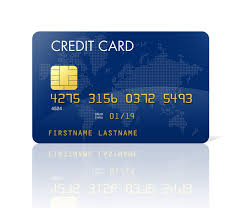Credit cards are one of the most common payment methods around the world, yet they are also one of the least secure forms of payment. There is no other payment method in history suffering from such a high rate of fraud and chargebacks, as these cards were never intended to be used for online payments. Several banks have issued a new version of their credit cards, which should make them more secure.
Also read: 20 GBP Note Goes Polymer, Competitors Embrace Blockchain Technology
The EMV Microchip In Your Credit Card
Whenever someone holds up a credit card, there will be a plastic-looking chip on the left side of the card. This chip is designed to be read by credit card processing terminals all over the world, to make the payment system more convenient and streamlined. Many people believe this chip holds all of the card owner’s sensitive information, but that is not the case.
To be more precise, that wasn’t the case, until now. Various banks around the world have started shipping out a new version of credit cards, packed with an EMV microchip. Rather than storing all of the cardholder’s information on the magnetic stripe on the back of the card – which is easy to copy and steal -, these EMV chips will contain all of the sensitive data.
Swiping a card at any location will no longer be such a high-level security threat to card holders, as the sensitive information can not be read through card skimming anymore. Making a duplicate of the valuable credit card information itself becomes much harder, as fraudsters would need tools to replicate an exact copy of the EMV chip. Up until this point, no such breach has been reported.
But there new types of credit cards will also bring some minor changes for both consumers and merchants. When paying at a location with an EMV-enabled card, the checkout process will take a few extra seconds to complete. Merchants, on the other hand, will need to install new payment terminals if they want to be compatible with EMV-enabled card payments. Failure to do so could result in credit card fraud charges being footed by the retailer.
Grasping At Straws To Keep Bitcoin At Bay
While the efforts to make credit card payment should be applauded, these new chips are one of the top financial innovations the sector has seen in the past 50 years. Financial institutions are grasping at straws to keep consumers away from other viable alternatives, such as Bitcoin, which are not in control of the banks or governments.
Merchants will have to upgrade their infrastructure at an additional cost to accommodate for these EMV-enabled payments. If they decide to accept Bitcoin as a payment method, however, there is no additional infrastructure to set up. Plus, they will be charged lower payment processing fees, and are protected from Bitcoin price volatility.
What are your thoughts on these new EMV chips to make credit cards more secure? Do you own such a card already? Let us know in the comments below!
Source: CNN Money
Images courtesy of Shutterstock, Merchantdiv, Frontline Processing











